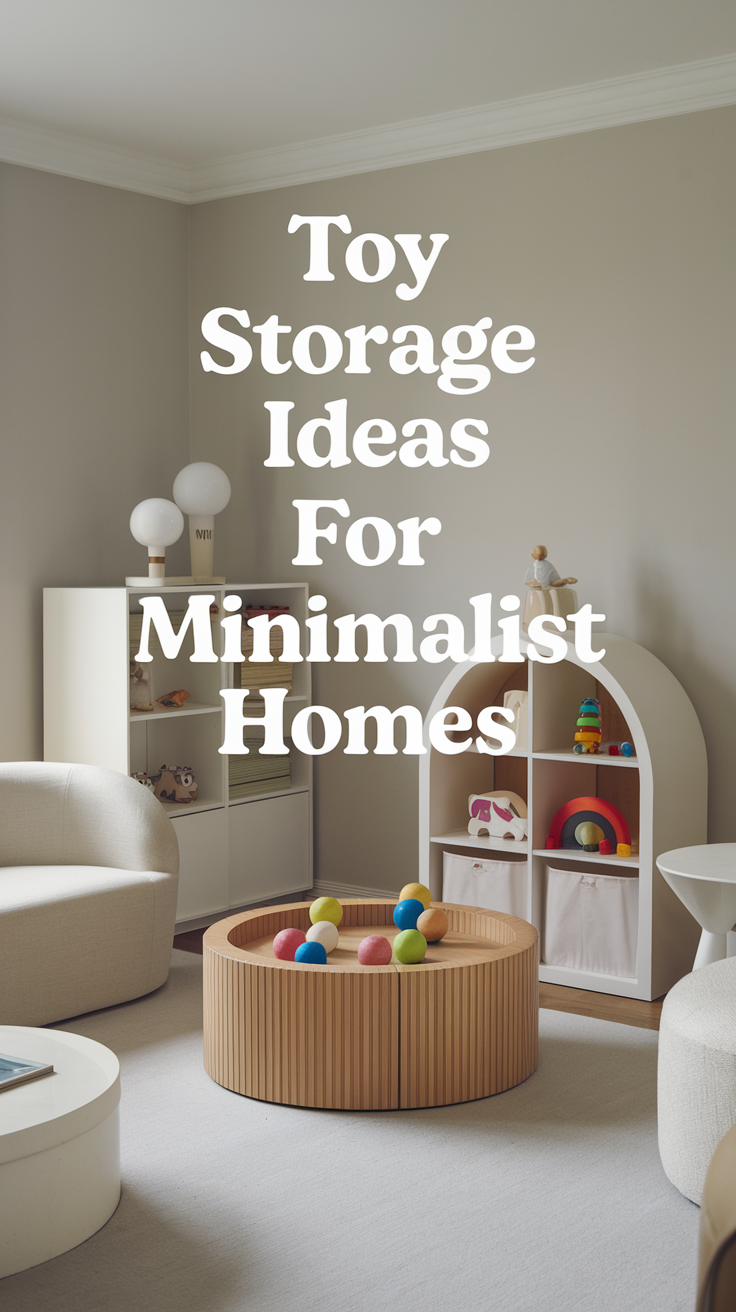
As a parent who has navigated the challenging waters of keeping a tidy home while raising children, I’ve learned that minimalist toy storage isn’t just about having fewer toys-it’s about creating intentional spaces that work smarter, not harder. Whether you’re living in a cozy apartment or simply want to embrace a more minimalist lifestyle, the key to successful toy storage lies in combining functionality with aesthetics. In this comprehensive guide, I’ll share 15 practical and tested toy storage solutions that have transformed my home and helped countless others maintain their minimalist aspirations while keeping their children’s toys organized and accessible.
Understanding Minimalist Toy Storage
Before diving into specific storage solutions, it’s essential to understand the principles of minimalist toy storage. The goal isn’t to deprive children of their beloved toys but to create an environment where play is purposeful and cleanup is manageable. From my experience, when toys have designated homes, children are more likely to engage in meaningful play and take responsibility for their belongings.
Here’s a quick overview of minimalist toy storage principles:
| Principle | Purpose | Benefit |
|---|---|---|
| One in, one out | Maintain toy quantity | Prevents accumulation |
| Quality over quantity | Focus on valuable toys | Encourages meaningful play |
| Accessible storage | Easy cleanup | Promotes independence |
| Regular rotation | Keep toys fresh | Maintains interest |
Space-Saving Solutions (Ideas 1-5)
1. Wall-Mounted Book and Toy Display
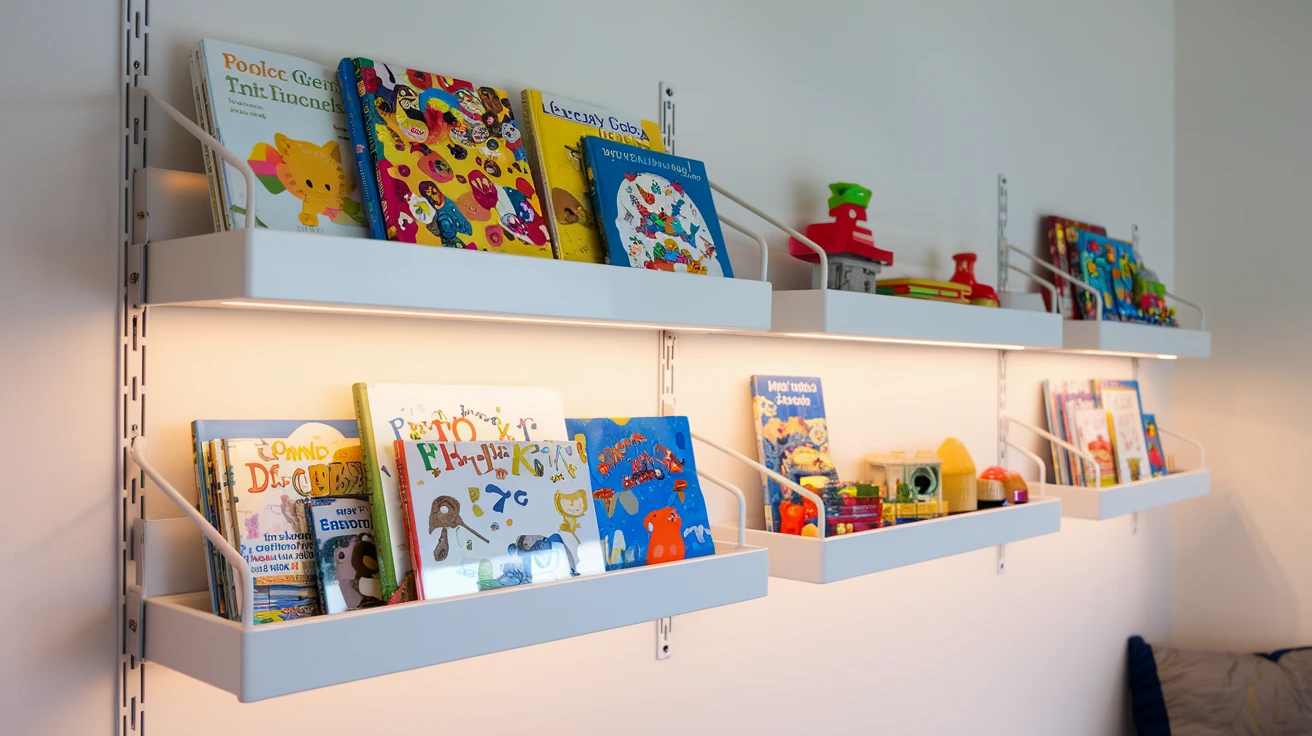
I discovered that utilizing vertical space is a game-changer in small homes. Install floating shelves at child-height to display books and favorite toys. This not only saves floor space but also creates an engaging visual display that can double as room decoration. I learned the hard way that securing shelves properly is crucial-after one unfortunate incident with an overloaded shelf, I now recommend using heavy-duty anchors and keeping weight limits in mind.
2. Under-Bed Rolling Storage Containers
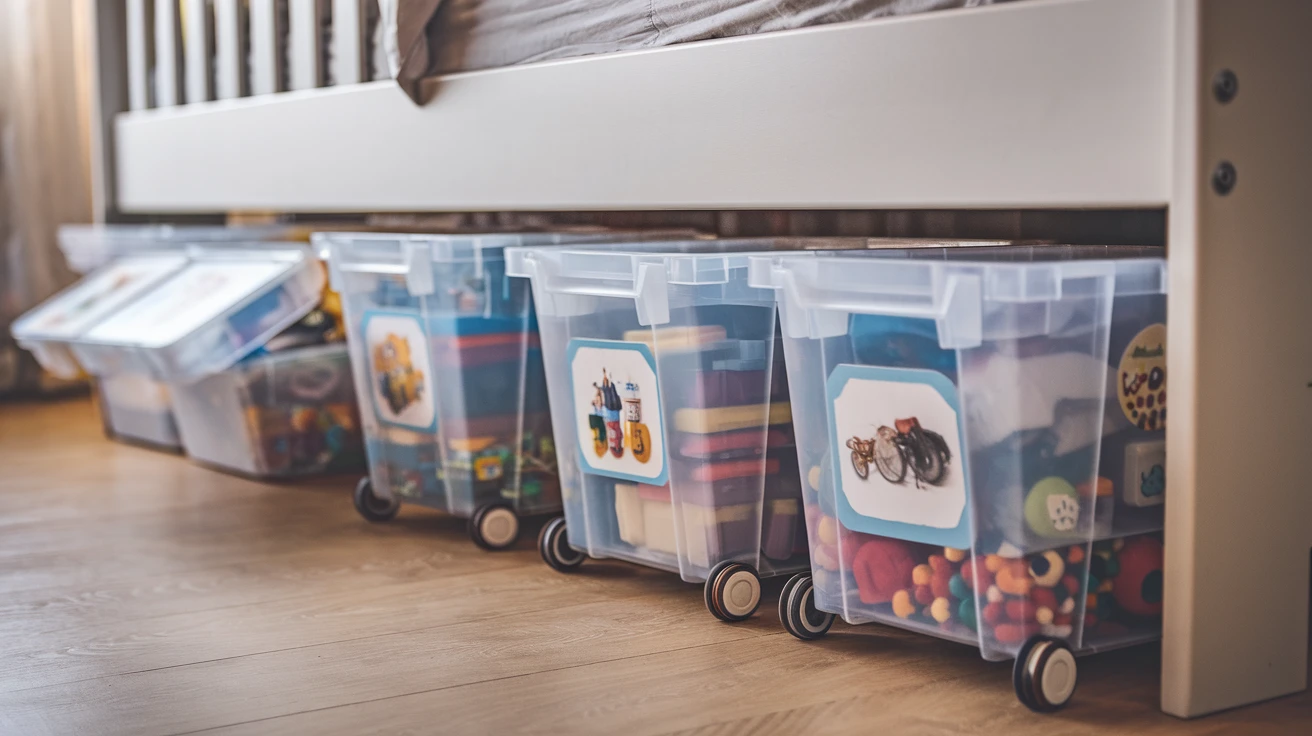
One of my favorite space-saving solutions is using the often-forgotten space under the bed. Clear, shallow containers with wheels make it easy for children to access and store toys independently. Pro tip: Label the containers with pictures for non-readers, and use drawer dividers to prevent the dreaded “toy soup” effect.
3. Door-Hanging Organizers with Clear Pockets
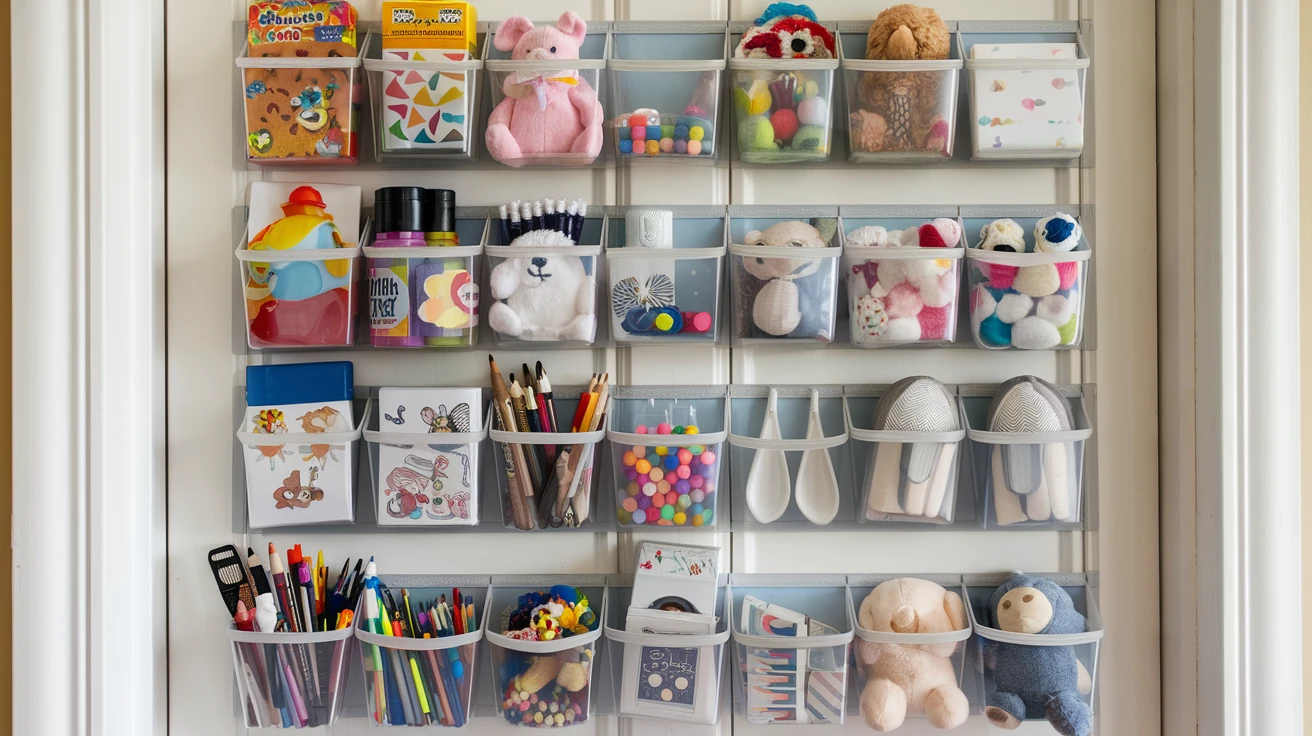
Those over-the-door shoe organizers? They’re perfect for storing small toys, art supplies, and stuffed animals. I’ve found that clear pockets make it easier for children to find what they’re looking for without dumping everything out. This solution has saved countless square feet of floor space in our home.
4. Multi-functional Ottoman Storage
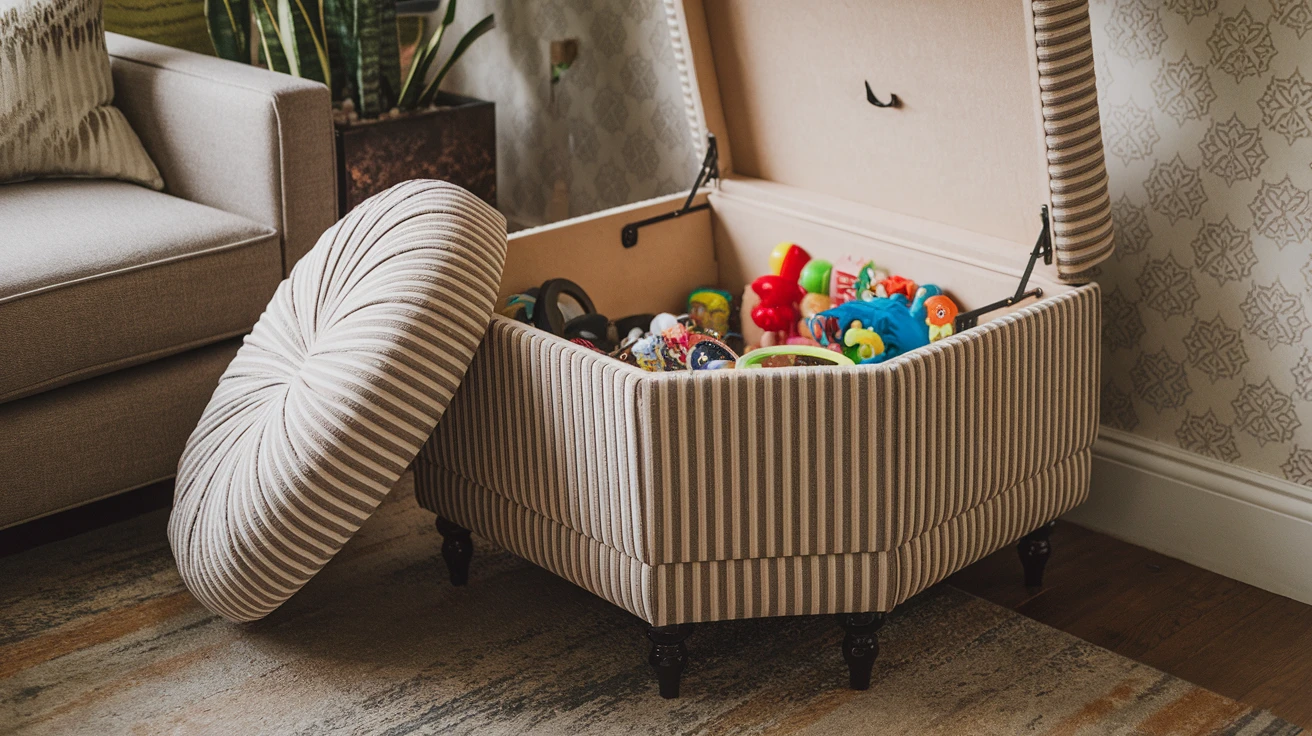
Invest in ottomans that open up for storage. These pieces serve triple duty: seating, storage, and occasional tables. I keep less-frequently-used toys in these, rotating them out monthly to maintain novelty without cluttering the space.
5. Magnetic Storage Strips
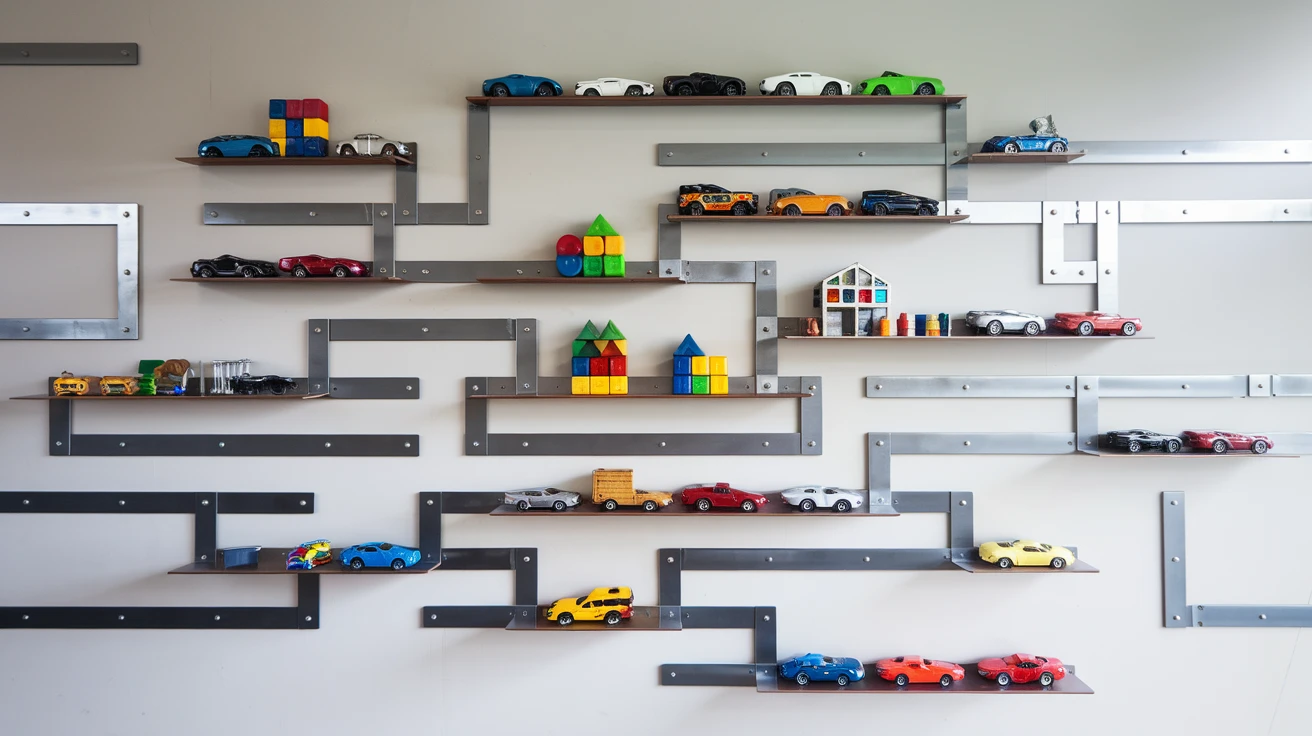
For homes with metal toys or components, installing magnetic strips on walls creates instant storage that doubles as an interactive play surface. This works wonderfully for toy cars, magnetic blocks, and other metal accessories.
Smart Organization Systems (Ideas 6-10)
6. Color-Coded Category System
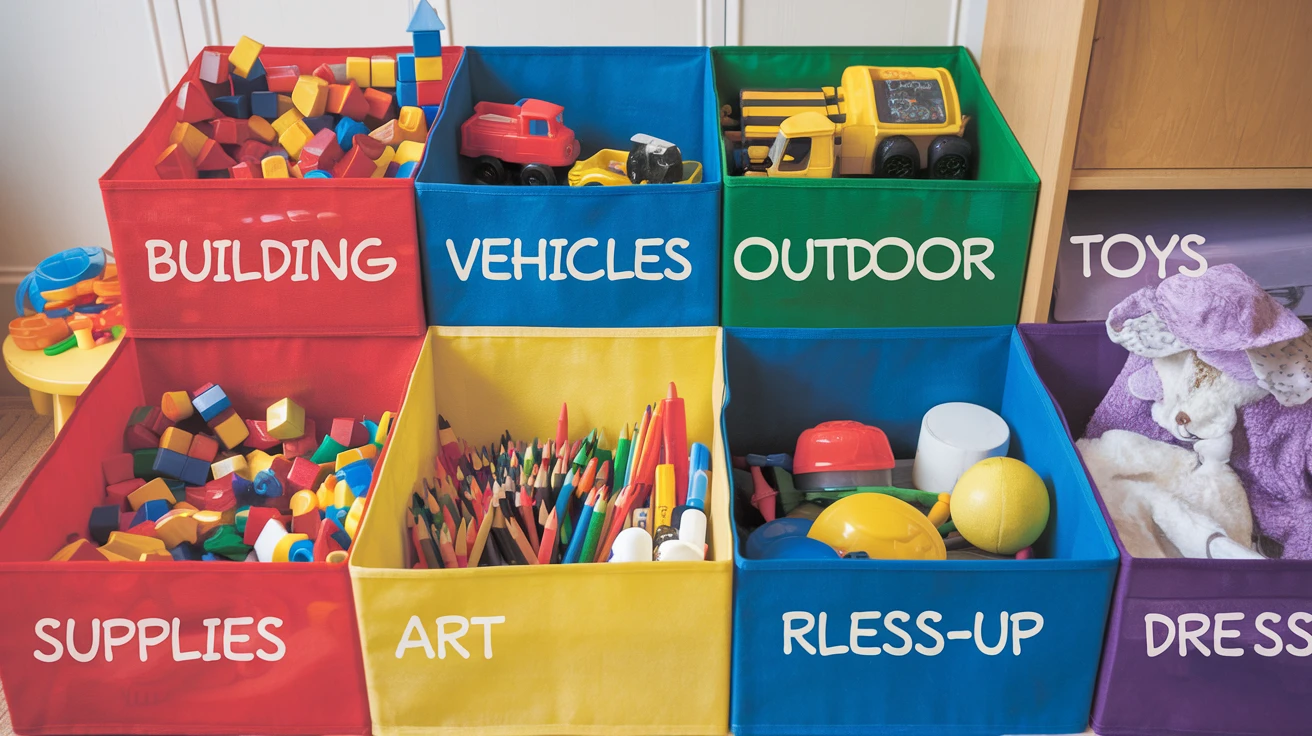
Implement a color-coding system for different toy categories:
- Red: Building blocks and construction toys
- Blue: Vehicles and transportation toys
- Green: Outdoor and active play items
- Yellow: Arts and crafts supplies
- Purple: Dress-up and imaginative play
7. Modular Cube Storage

These versatile units can be configured to fit any space. Here’s how I organize mine:
| Cube Position | Content Type | Access Frequency |
|---|---|---|
| Top level | Display items | Occasional |
| Middle level | Daily-use toys | Frequent |
| Bottom level | Heavy items | Daily |
8. Rotating Toy Library System

Create a “toy library” where only certain toys are available at any given time. This keeps interest high and clutter low. I store out-of-rotation toys in labeled bins in a closet or basement.
9. Clear Bin Category Labels
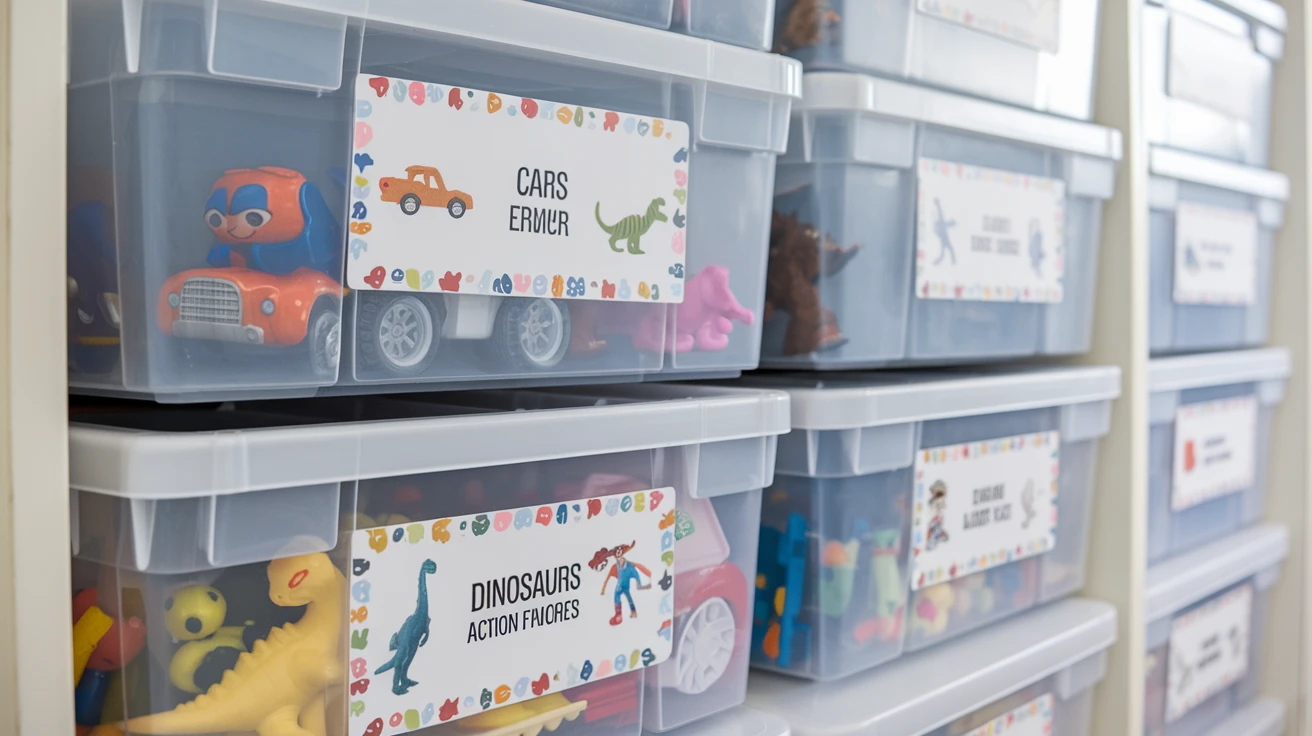
Use picture labels combined with words to help children maintain organization independently. I’ve found that laminated labels last longer and can be easily updated as toy collections change.
10. Vertical Puzzle and Game Storage
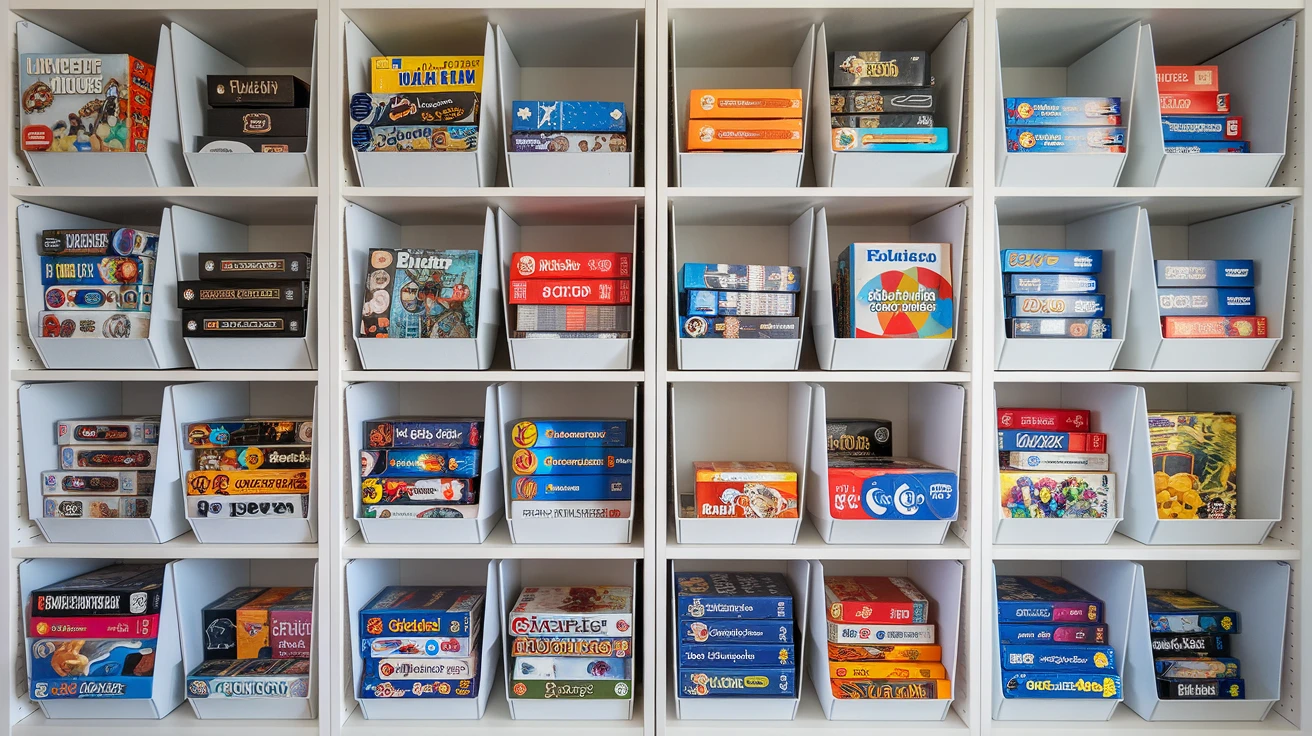
Store board games and puzzles vertically like books-it saves space and makes them easier to access. Use magazine holders or file organizers to keep boxes upright and organized.
Creative Storage Ideas (Ideas 11-15)
11. Window Seat Storage Bench

This dual-purpose solution provides both seating and storage while utilizing otherwise unused space. I built one using basic IKEA cabinets and added cushions on top-it’s now our favorite reading spot and toy storage solution.
12. Pegboard Wall Organization
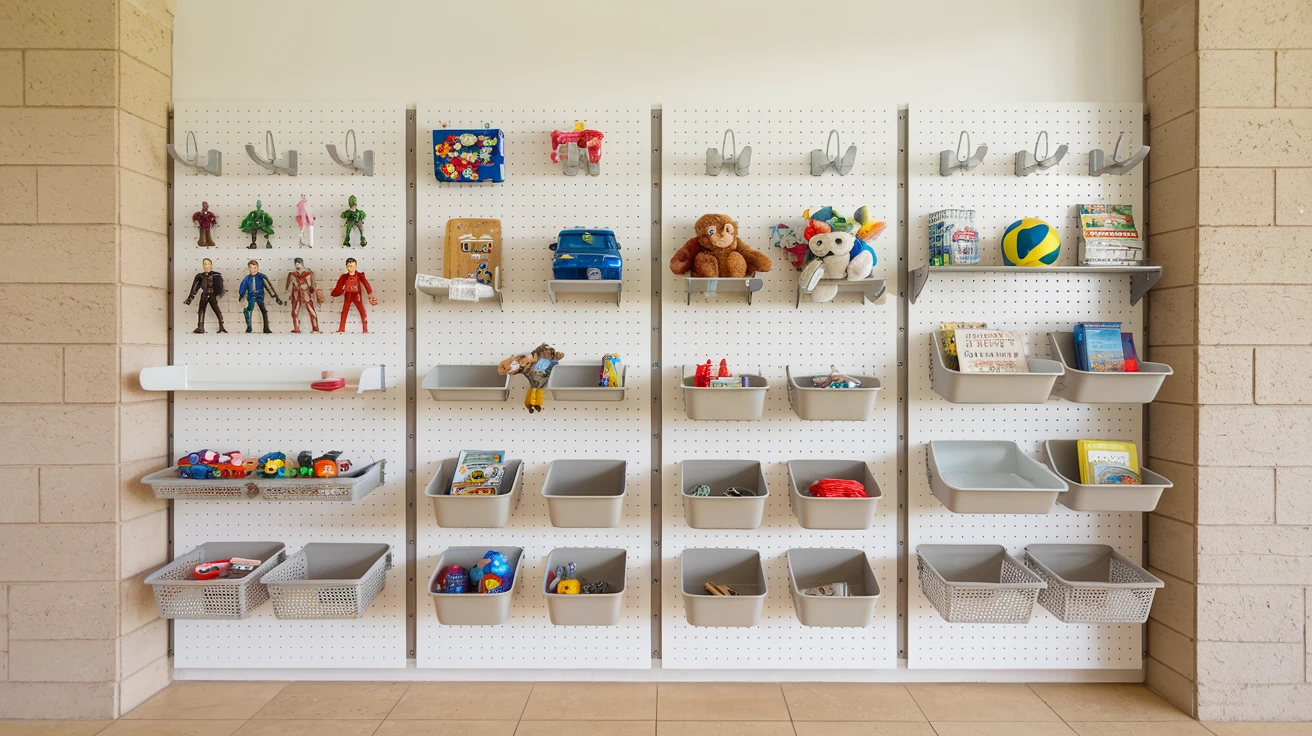
Install a pegboard wall system with adjustable hooks and shelves. This flexible solution grows with your child’s changing storage needs. Key benefits include:
- Adjustable height for growing children
- Customizable configuration
- Visual appeal when styled properly
- Easy access for children
- Maximum use of vertical space
13. Rolling Cart System
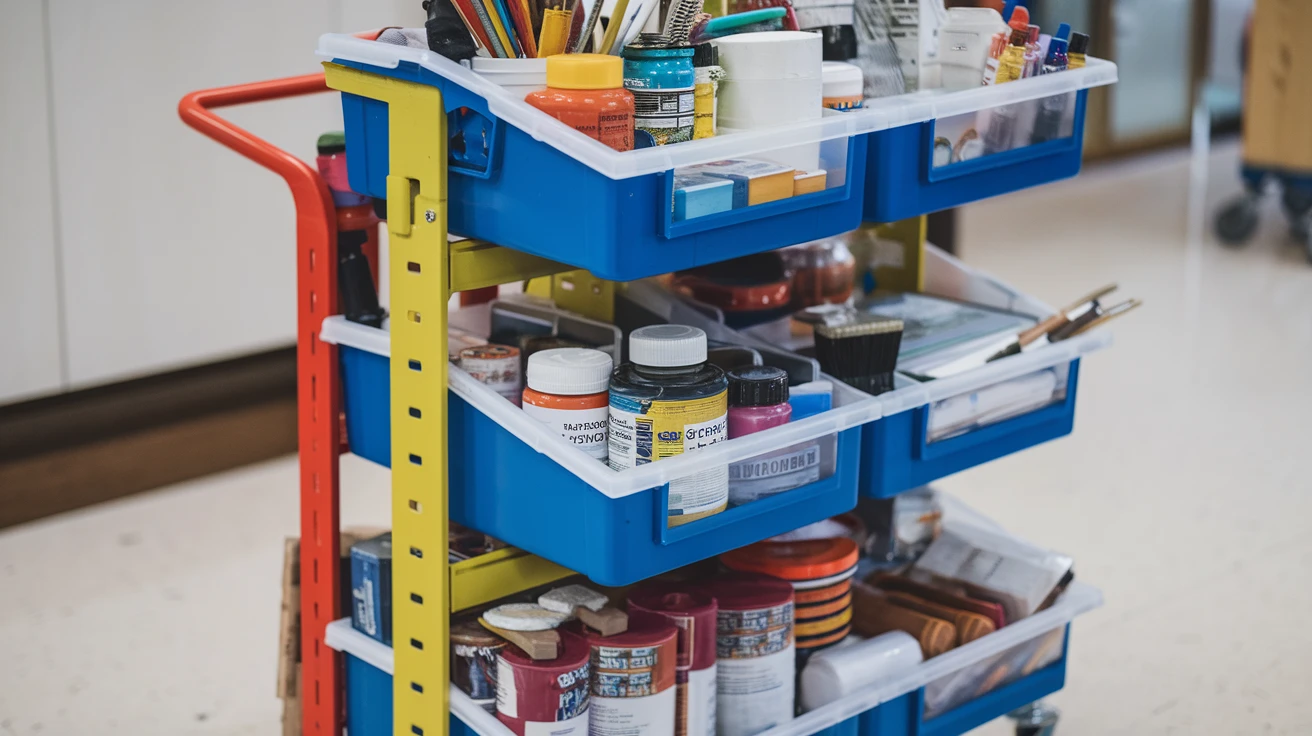
Utilize rolling carts for art supplies or building materials that can be easily moved from room to room. This has been particularly useful during clean-up time-children can roll the cart around to collect their toys.
14. Corner Rope Storage
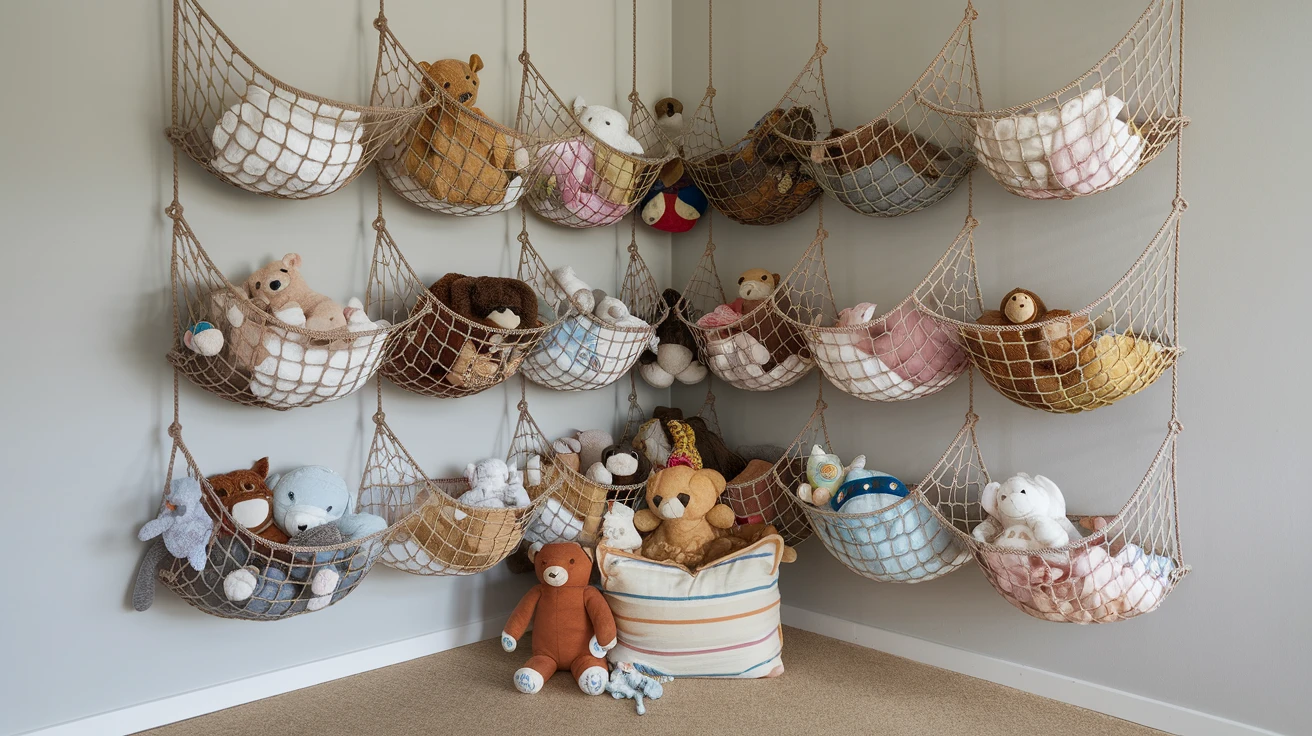
Install a corner rope storage system for stuffed animals and soft toys. This unique solution turns toys into decor while keeping them off the floor. The best part? It costs less than $20 to implement!
15. Minimalist Display Shelving
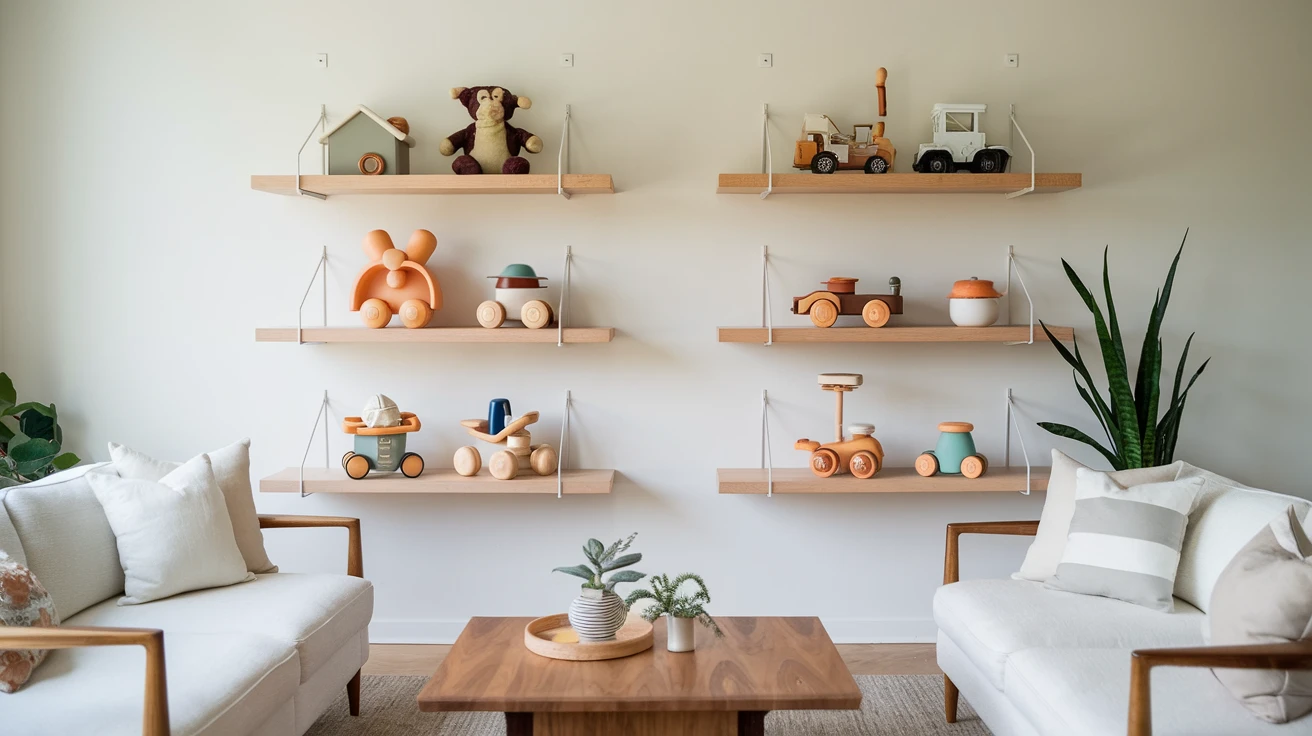
Create a rotating display of 5-7 favorite toys on simple floating shelves. This encourages children to value quality over quantity and makes cleanup easier.
Conclusion
Implementing minimalist toy storage solutions in a small home doesn’t have to be overwhelming. Start with one area at a time, involve your children in the process, and remember that perfection isn’t the goal-functionality is. These 15 ideas can be mixed and matched to create a system that works for your unique space and family needs. The key is to maintain consistency and regularly reassess your storage solutions as your children grow and their play needs evolve.
Key Takeaways
- Vertical storage solutions maximize space in small homes
- Multi-functional furniture provides storage without sacrificing living space
- Regular toy rotation keeps spaces organized and maintains children’s interest
- Clear labeling and accessible storage encourage independence and maintenance
- Consistent organization systems make cleanup easier for the whole family
Frequently Asked Questions
-
How often should I rotate toys in a minimalist setup?
Based on experience, rotating toys every 2-4 weeks keeps children engaged while maintaining organization. However, adjust this timeline based on your child’s age and interests.
-
What’s the ideal number of toys to keep out at once?
A good rule of thumb is to have 15-20 toys accessible at any time, focusing on open-ended toys that encourage creative play.
-
How can I maintain minimalist toy storage with multiple children?
Assign each child their own color-coded storage spaces and implement a shared toy zone for communal items. Regular family cleanup sessions help maintain order.
-
What’s the best way to handle toy donations from family members?
Communicate your minimalist goals with family members and suggest experience gifts or specific toys that align with your storage system. Consider implementing a one-in-one-out rule.
-
How do I organize toys with multiple small pieces?
Use clear containers with dividers and label them clearly. Keep sets together in ziplock bags within larger containers.
-
What’s the best height for children’s storage solutions?
Storage should be at your child’s eye level or below to encourage independence. Adjust heights as children grow.
-
How do I prevent toy storage areas from looking cluttered?
Use uniform containers, maintain a consistent color scheme, and regularly edit toy collections to prevent overflow.
-
What should I do with seasonal toys?
Store seasonal toys in labeled bins in a less accessible area, rotating them in when appropriate. This keeps the primary play space organized.
-
How can I encourage children to maintain toy organization?
Make cleanup part of the daily routine, use picture labels for young children, and create simple systems that are easy to maintain.
-
What’s the most cost-effective way to implement these storage solutions?
Start with repurposed items, shop second-hand for storage containers, and implement solutions gradually as budget allows. Many of these ideas can be DIY’d for significant savings.
